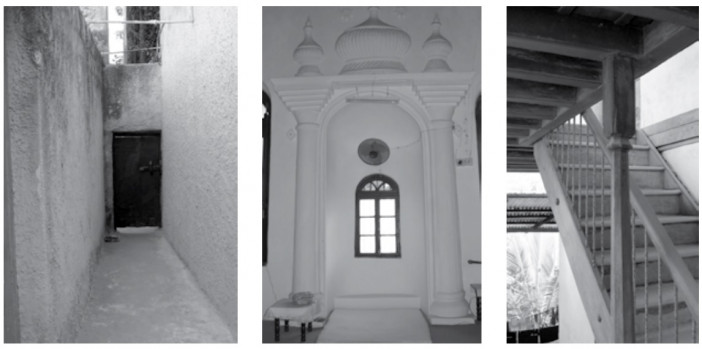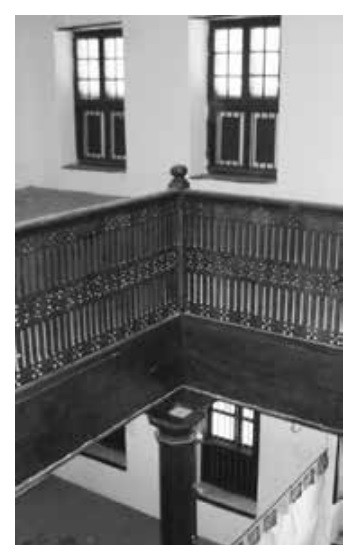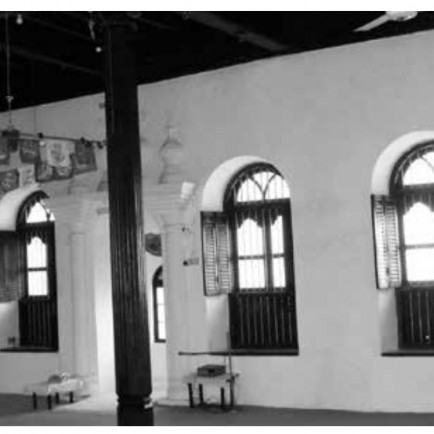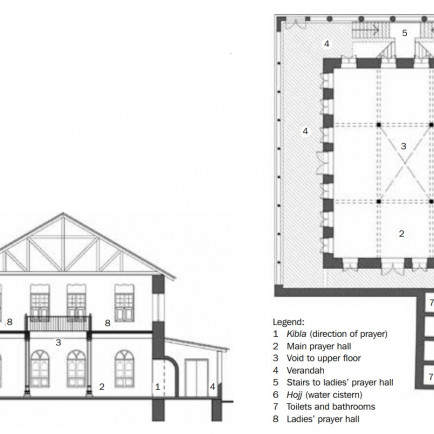Lamu Bohra Mosque
History
At the location where the current mosque is located, the first Bohra mosque in East Africa was most likely constructed in Lamu sometime in the 1750s. It was a modest mud and thatch structure that was afterwards rebuilt by a much larger and more opulent mosque paid for by Jivanjee and Hassanali, the sons of Adamjee Walijee, a well-known Bohra businessman who lived in Zanzibar.
For the construction of a beautiful new stone edifice, which was begun in 1918 and finished in 1920, the old mosque was demolished. Mistry Ismailbhai Babuji was the builder the family chose, and he traveled to Lamu to supervise the work.
Urban and Architectural
A ninesquare mandala, a distinctive layout shared by all mosques, was used in the main prayer area. Men use the ground floor, while women gather on the first story. Contrary to Sunni Muslim practice, women are urged to participate in the group prayers. The women can hear and follow the religious service without being observed by the males downstairs thanks to the mandala's centre square being left empty.
Description
The Bohra community has always been highly organized and closely knit. As the Lamu mosque demonstrated, mosques were also used as community centers. They contained eating rooms, kitchens, madrassas, cemeteries, gusl khanna (rooms for washing and preparing the deceased before burial), ablution facilities, and frequently a priest's home.
References
https://www.makeheritagefun.com/bohra-immigrant-lamu-malawi/
Details
Location
Lamu, Kenya
Worshippers
250
Owners
Jivanjee and Hassanali
Architect Name
Year of Build
1920
Area
500
Drawings
Map
History
At the location where the current mosque is located, the first Bohra mosque in East Africa was most likely constructed in Lamu sometime in the 1750s. It was a modest mud and thatch structure that was afterwards rebuilt by a much larger and more opulent mosque paid for by Jivanjee and Hassanali, the sons of Adamjee Walijee, a well-known Bohra businessman who lived in Zanzibar.
For the construction of a beautiful new stone edifice, which was begun in 1918 and finished in 1920, the old mosque was demolished. Mistry Ismailbhai Babuji was the builder the family chose, and he traveled to Lamu to supervise the work.
Urban and Architectural
A ninesquare mandala, a distinctive layout shared by all mosques, was used in the main prayer area. Men use the ground floor, while women gather on the first story. Contrary to Sunni Muslim practice, women are urged to participate in the group prayers. The women can hear and follow the religious service without being observed by the males downstairs thanks to the mandala's centre square being left empty.
Description
The Bohra community has always been highly organized and closely knit. As the Lamu mosque demonstrated, mosques were also used as community centers. They contained eating rooms, kitchens, madrassas, cemeteries, gusl khanna (rooms for washing and preparing the deceased before burial), ablution facilities, and frequently a priest's home.








